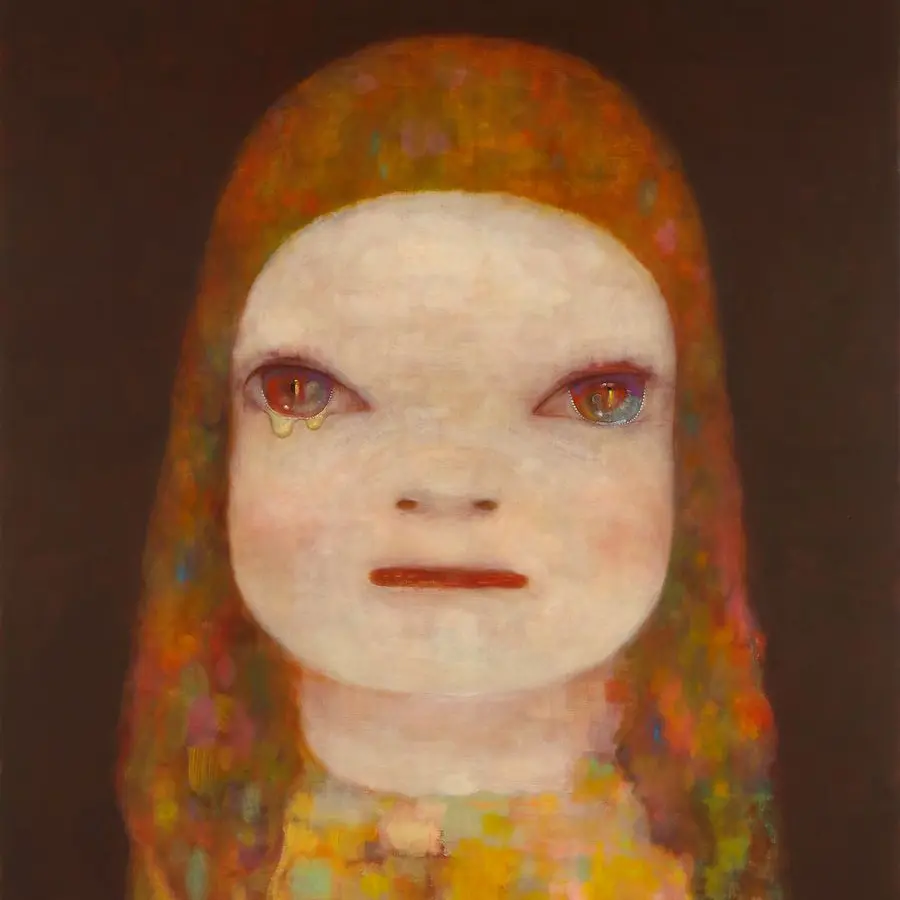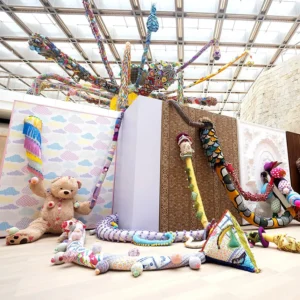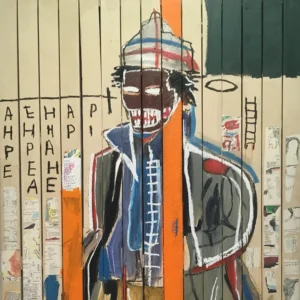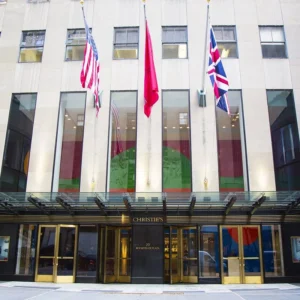The Guggenheim Museum Bilbao is hosting Yoshitomo Nara’s first major European museum exhibition. Renowned for his bold, cartoon-like depictions of children with exaggerated features, Nara captures a spectrum of emotions, from defiance to introspection. The retrospective offers a compelling journey through his artistic evolution.
The exhibition features a wide array of Yoshitomo Nara’s paintings, drawings, sculptures, and installations from 1984 to 2024, showcasing his empathetic responses to the people and places he has encountered.
The exhibition, arranged thematically, showcases recurring motifs such as the red-roofed house, sprouts, puddle, box, blue boat, and forest, highlighting the continuity of his thoughts and stylistic development throughout his career, providing insights into Nara’s conceptual and formal processes rather than following a chronological order or focusing on techniques and materials.
His characters—figures, animals, and hybrids—reflect his innermost thoughts and emotions, fueled by childhood memories, a love of music and literature, art history, and encounters with diverse cultures. Known for his free-spirited attitude and affinity for folk, rock, and underground punk music, Nara deeply engages with humanity and society, exploring themes of home, community, nature, and the environment, emphasizing their interconnectedness.
Yoshitomo Nara, born in 1959 in Hirosaki, Japan, studied painting at the University of the Arts in Aichi before moving to Germany in the late 1980s to attend the Kunstakademie in Düsseldorf. Spending twelve years in Germany, he developed his unique style before returning to Japan in 2000.
Nara’s emotionally direct works, notably featuring children with wide-set eyes, gained recognition in the European art world. After earning a master’s degree, he lived in Cologne from 1994 to 2000, holding solo exhibitions across Europe. His art, exploring themes like “Mumps” and “Abandoned Puppy,” often depicted children within symbolic boxes.
After twelve years in Germany, Nara returned to Japan in 2000. The following year, his major solo exhibition “I DON’T MIND, IF YOU FORGET ME.” opened at Yokohama Art Museum, traveling to five other venues across Japan, including his hometown of Hirosaki. This exhibition established Nara as one of Japan’s most prominent and widely-known artists.
The scale of the destruction by the Great East Japan earthquake in 2011 deeply impacted Nara. Confronted with the loss and suffering of those affected, he reevaluated his role as an artist and shifted his focus to the Tohoku region, his childhood home.
Nara initiated local, community-based art projects, reflecting a transformed worldview evident in works like “From the Bomb Shelter” (2017), depicting a child emerging tentatively from an underground bunker. Similarly, paintings such as “Blankey” (2012) and “Midnight Tears” (2023) exude a sense of uncertainty, with ethereal figures painted in fragmented colors, communicating deep emotions through tear-filled eyes.





